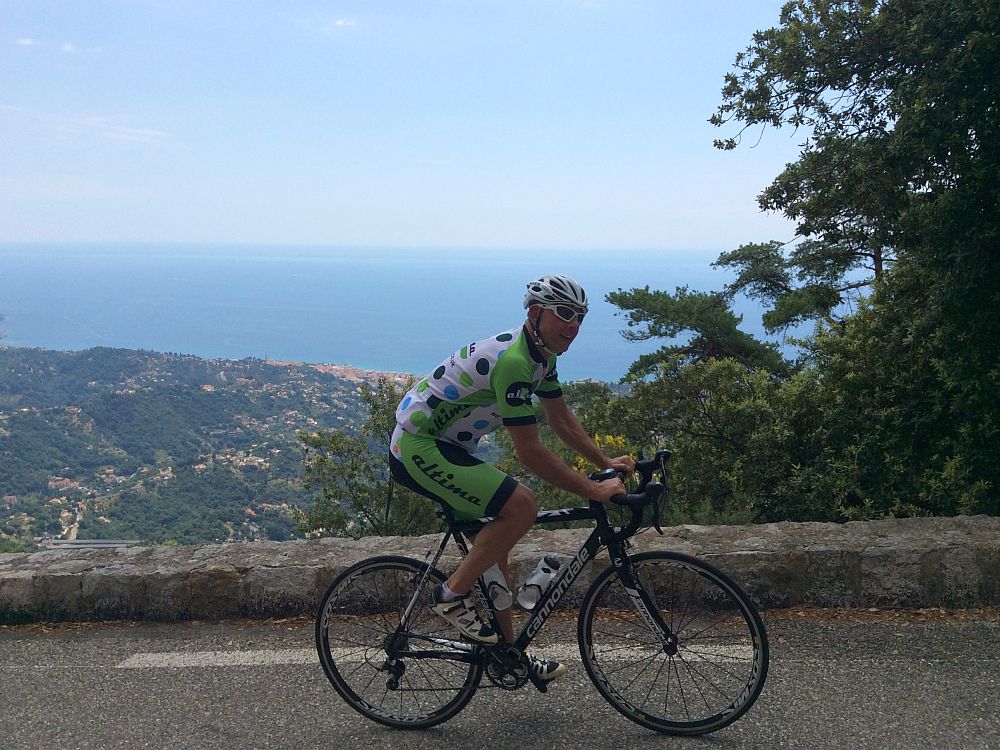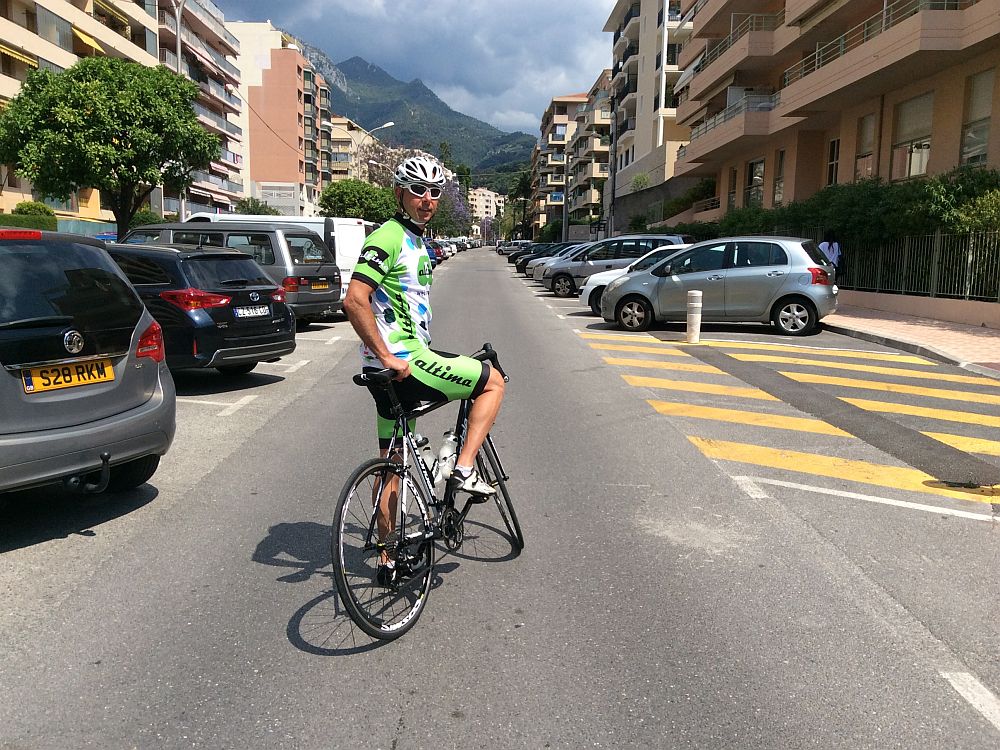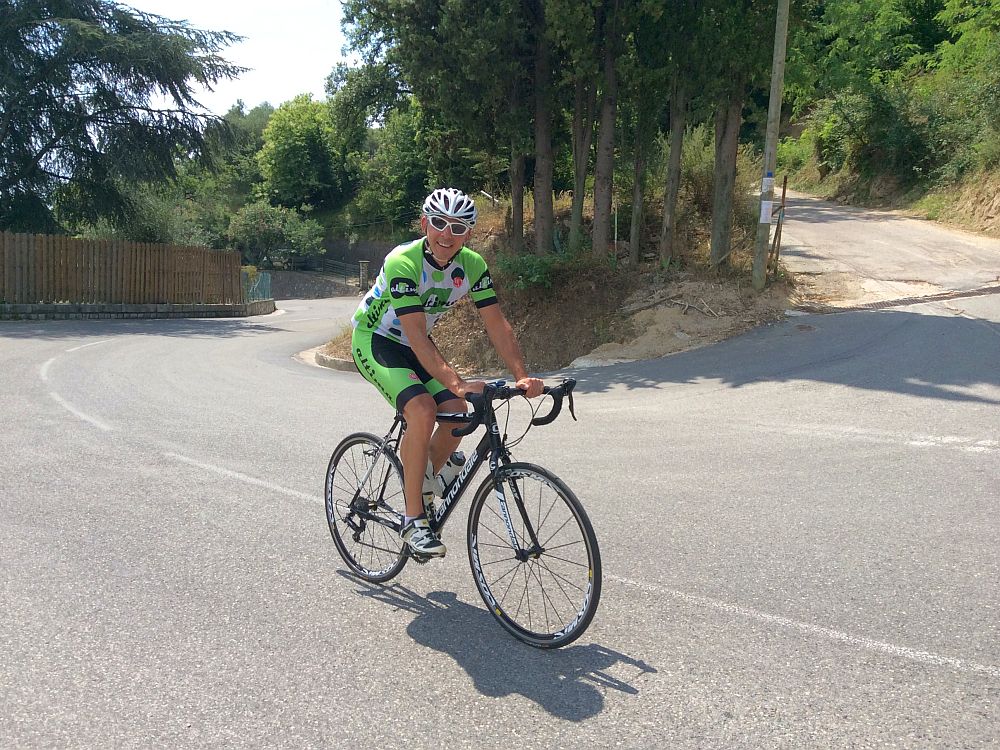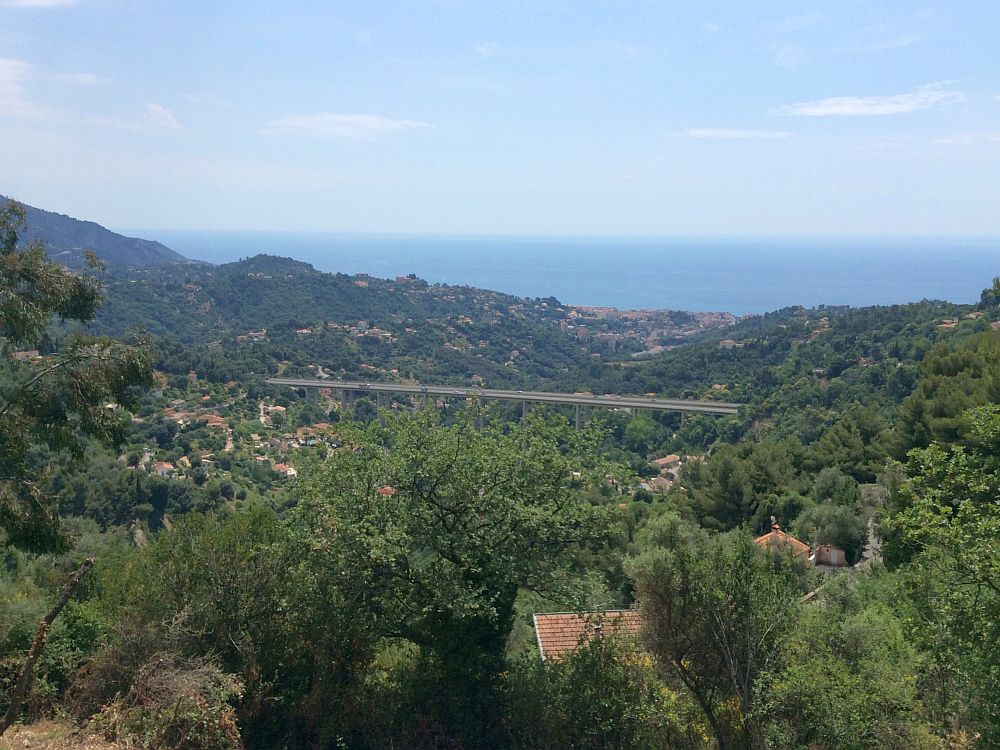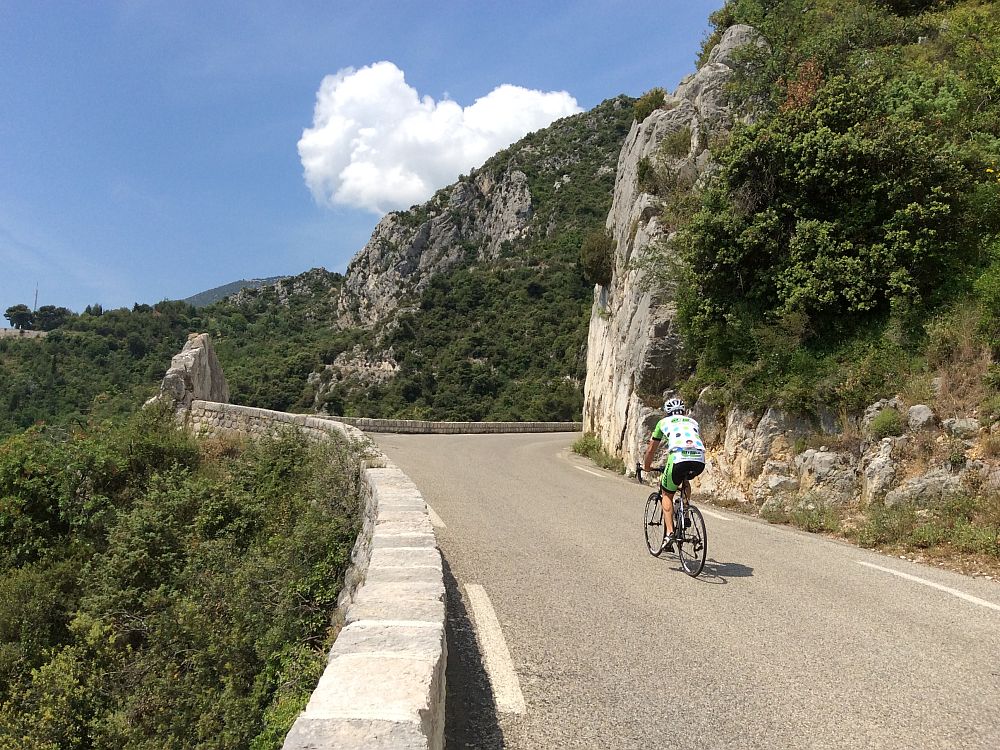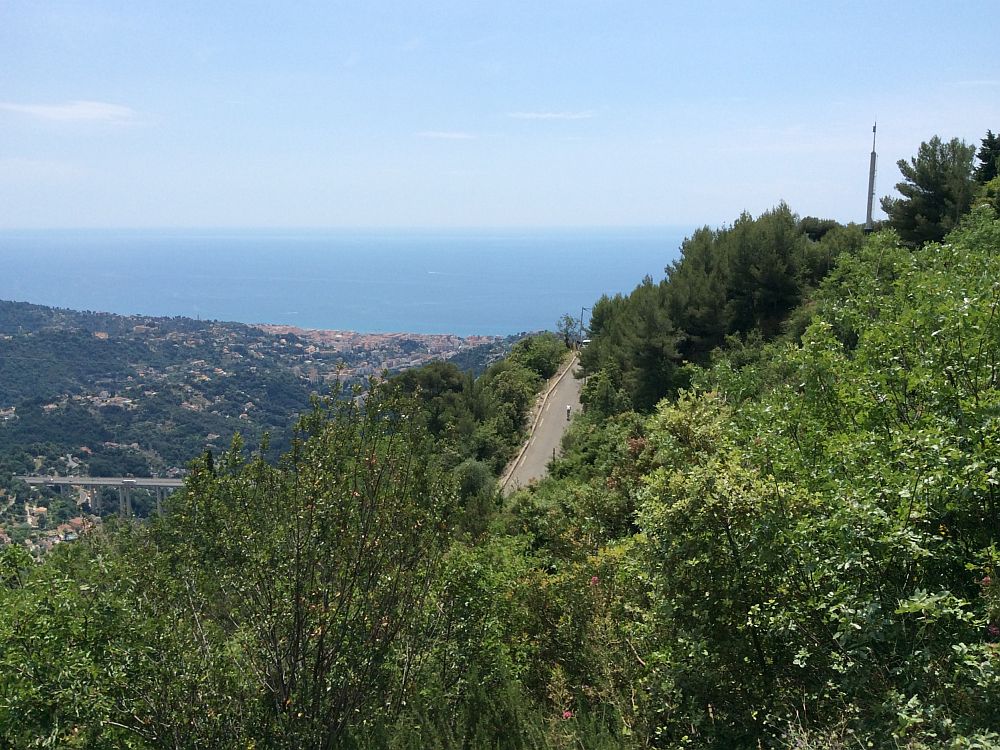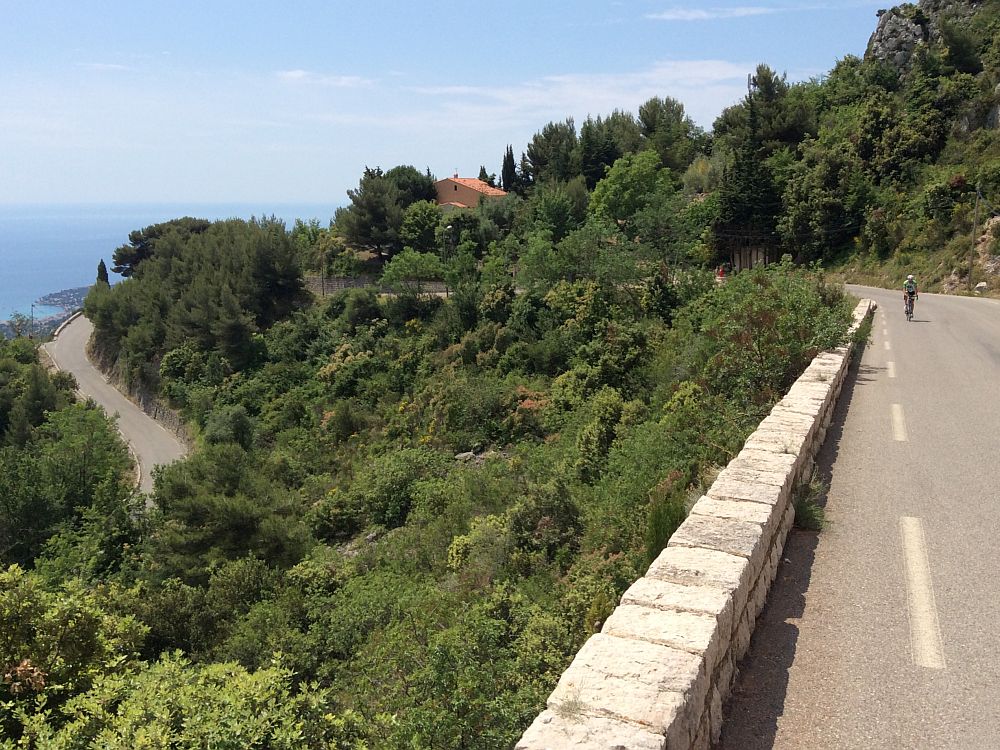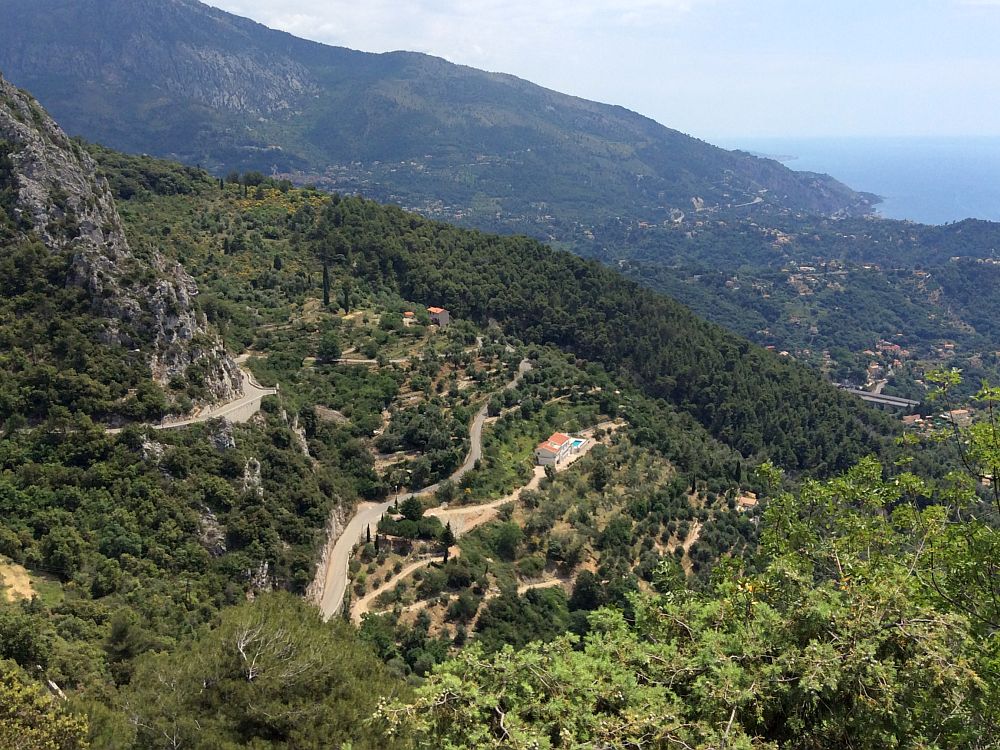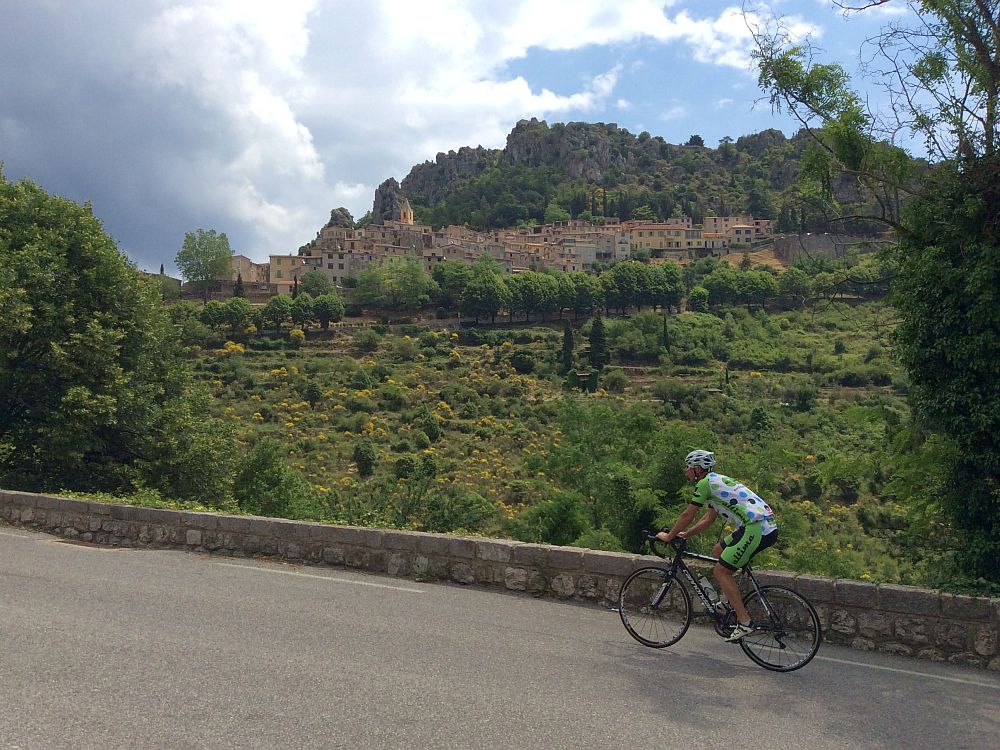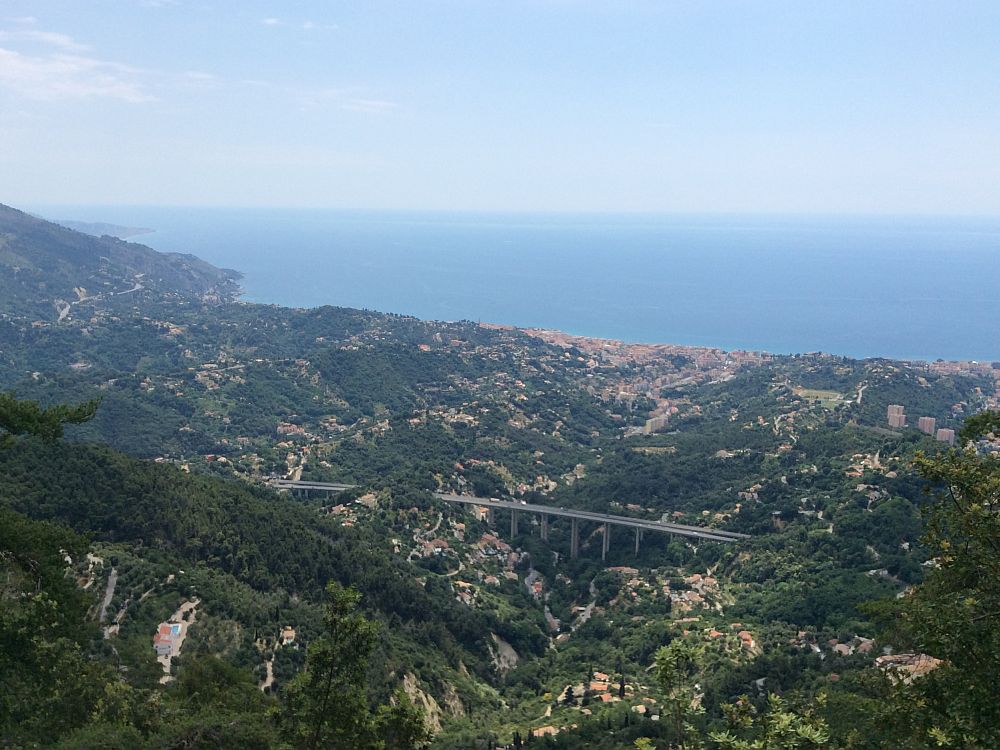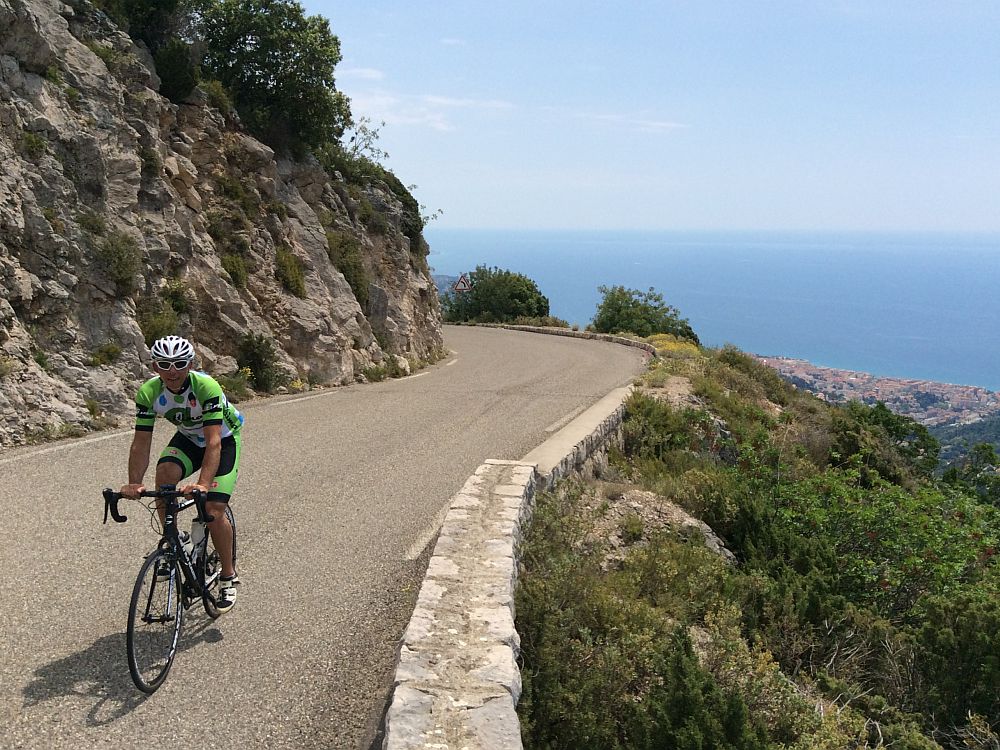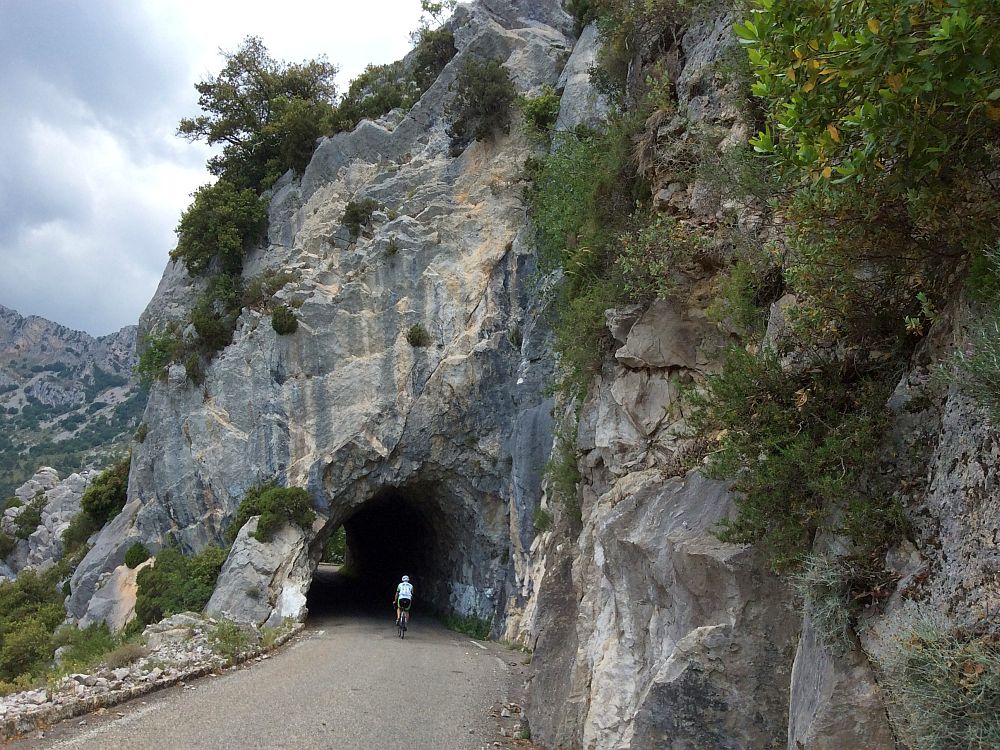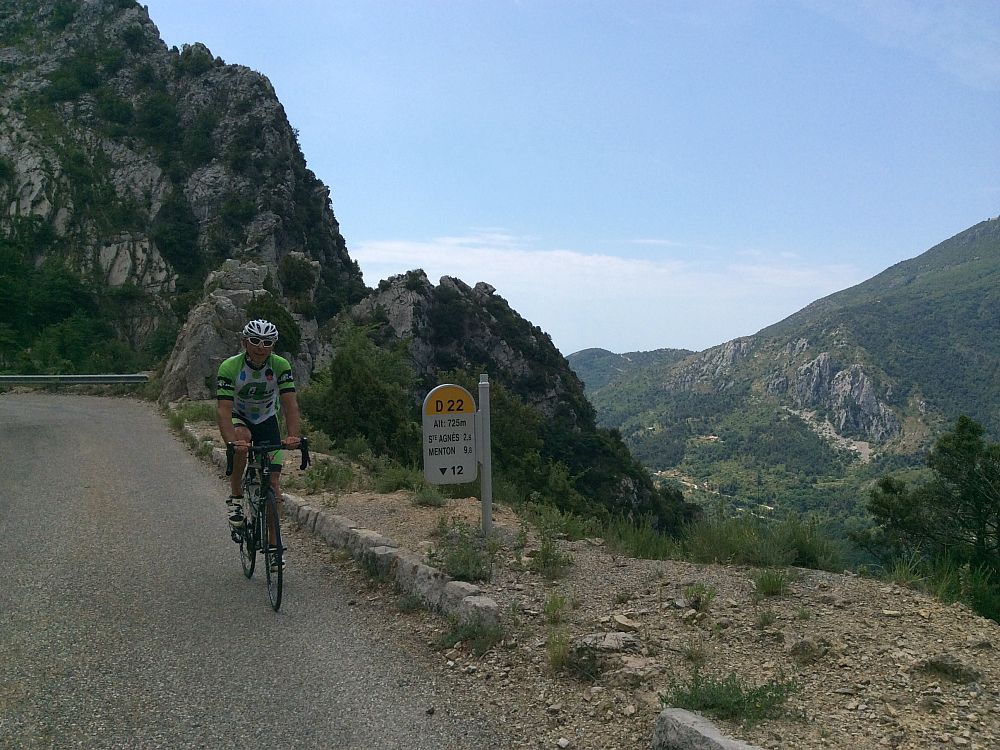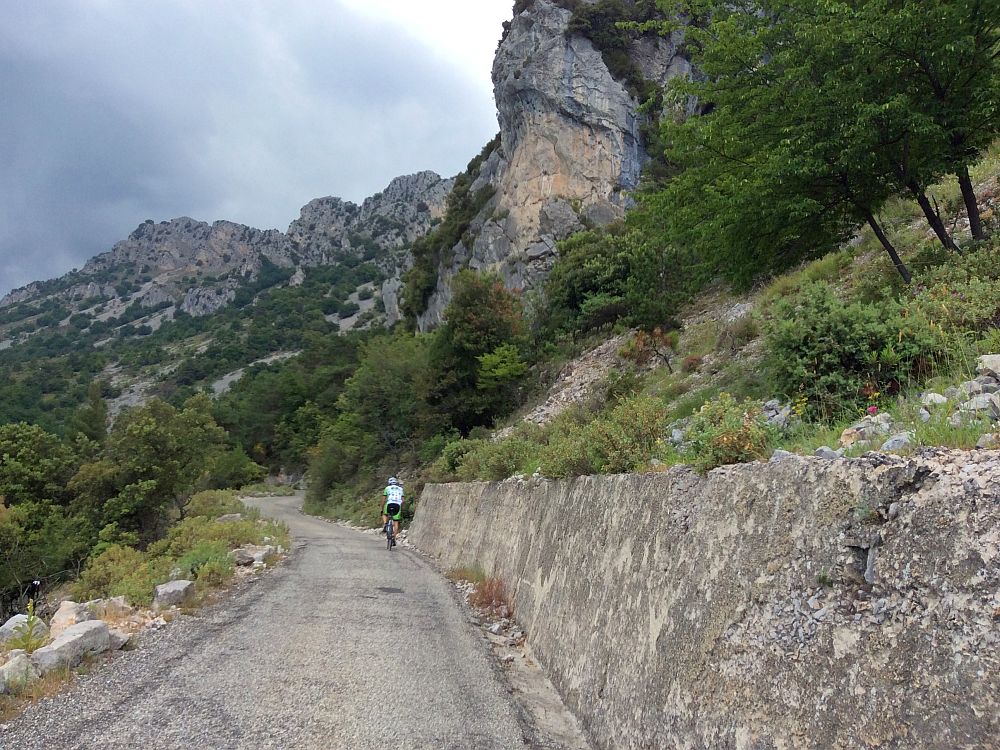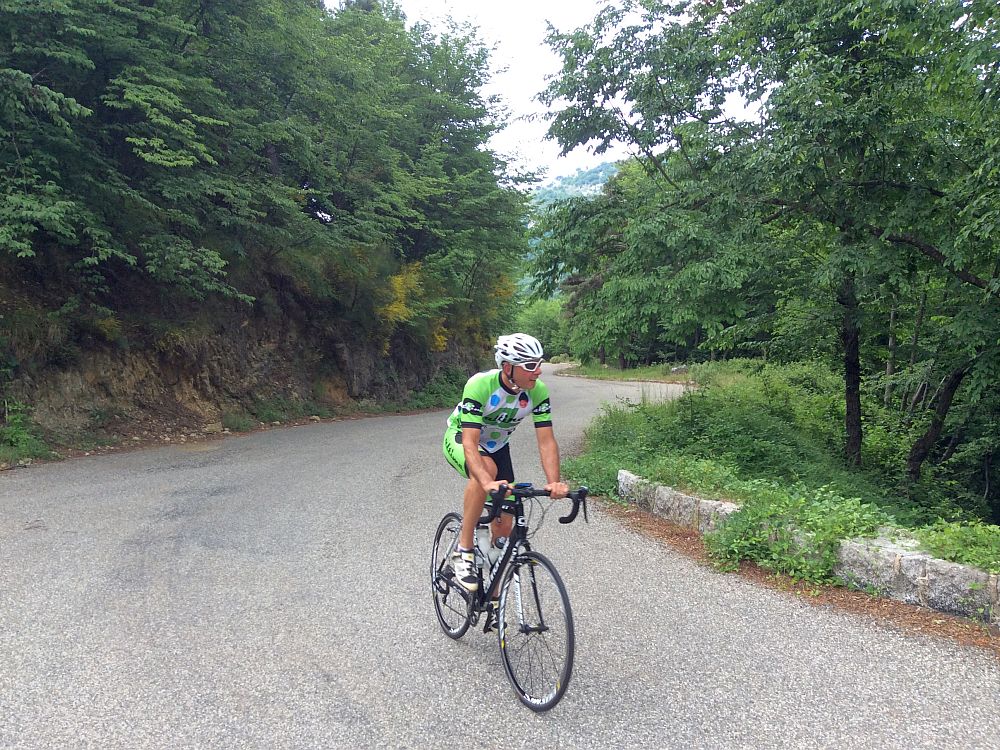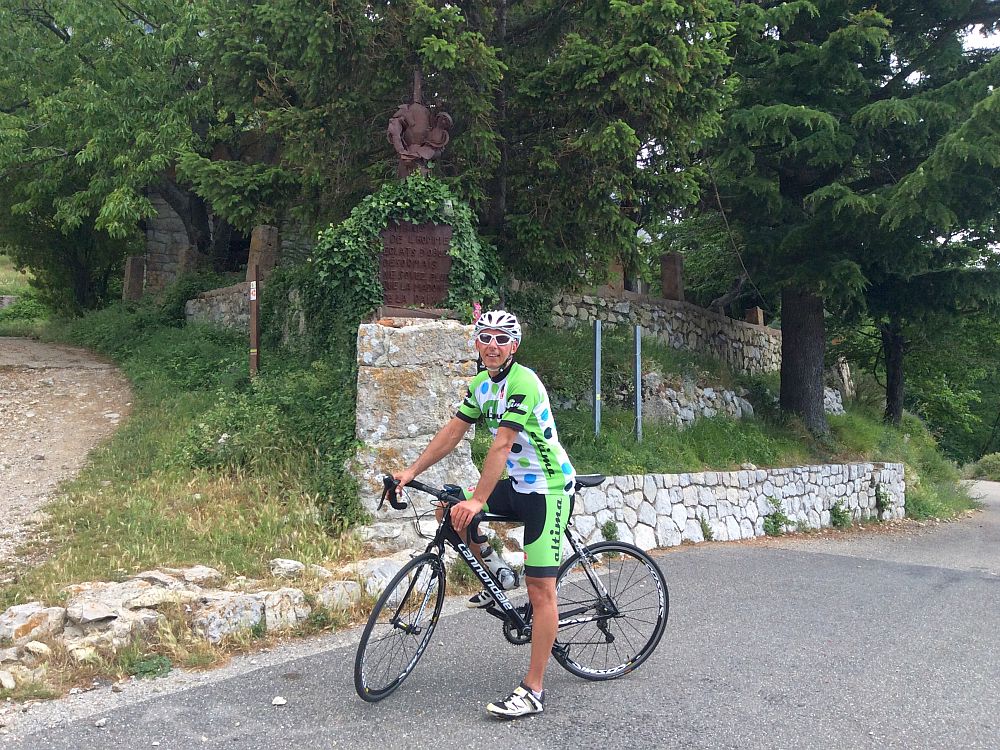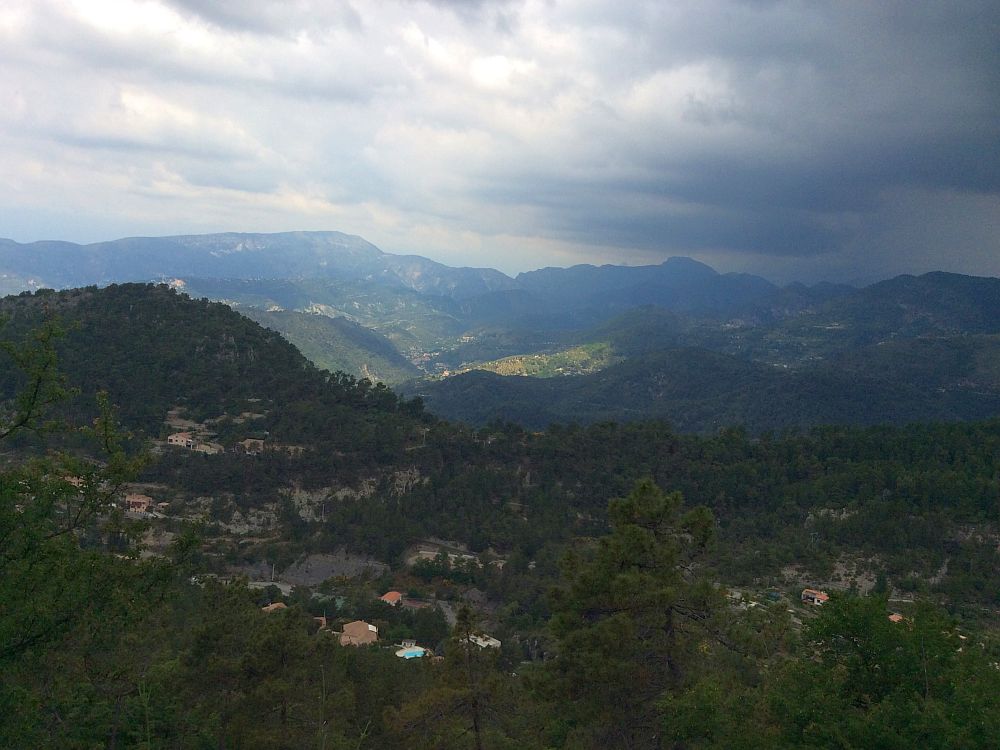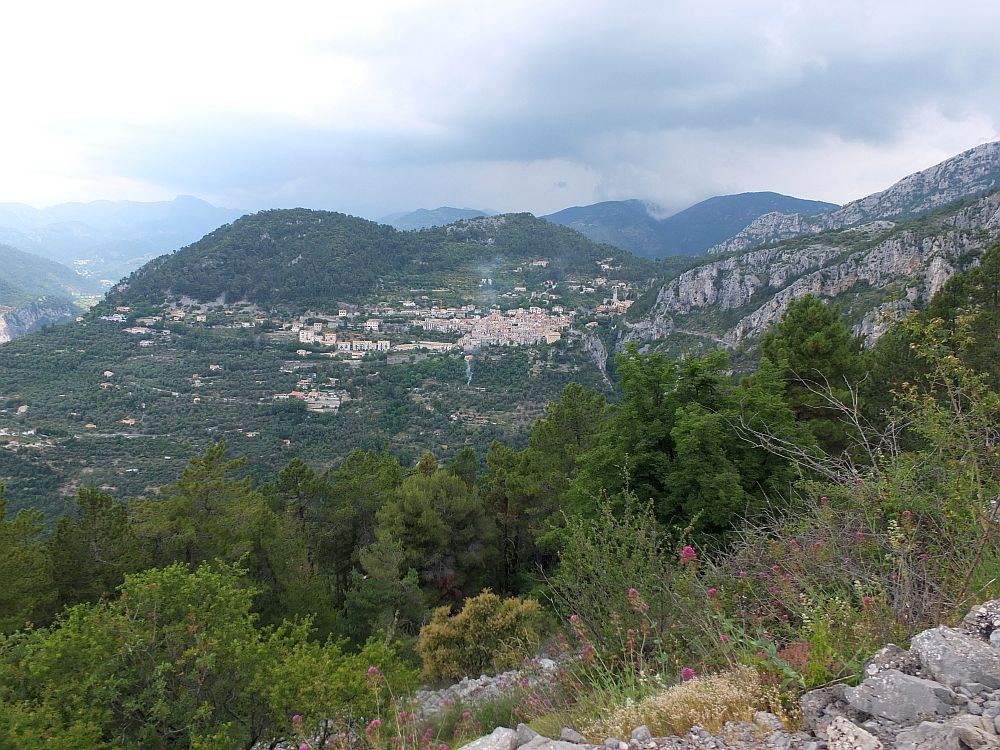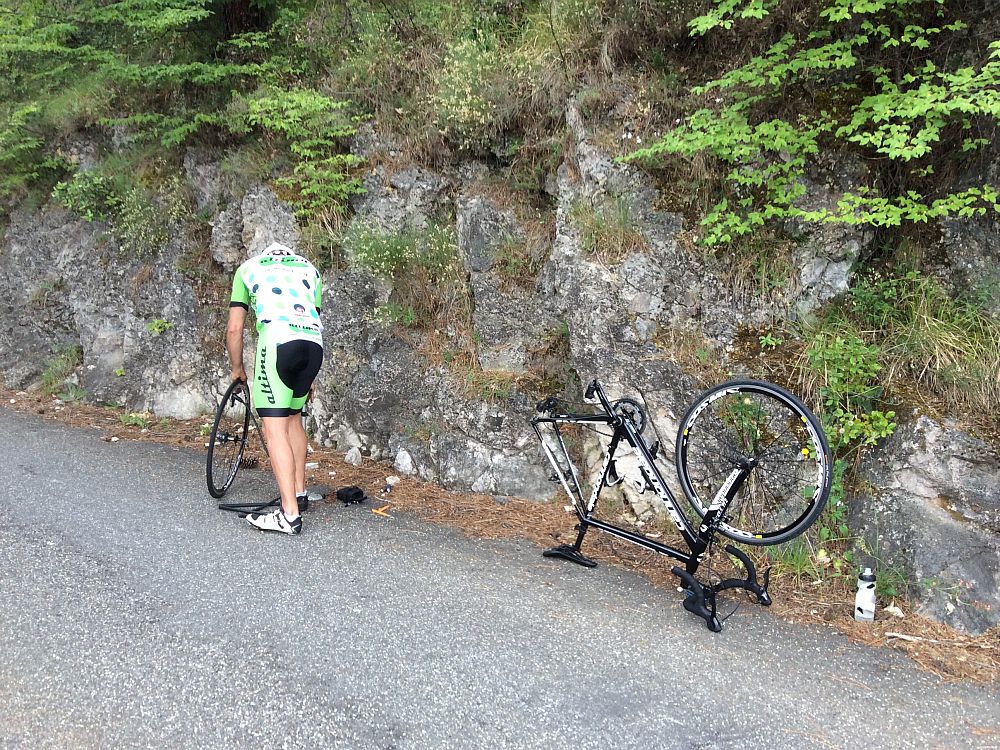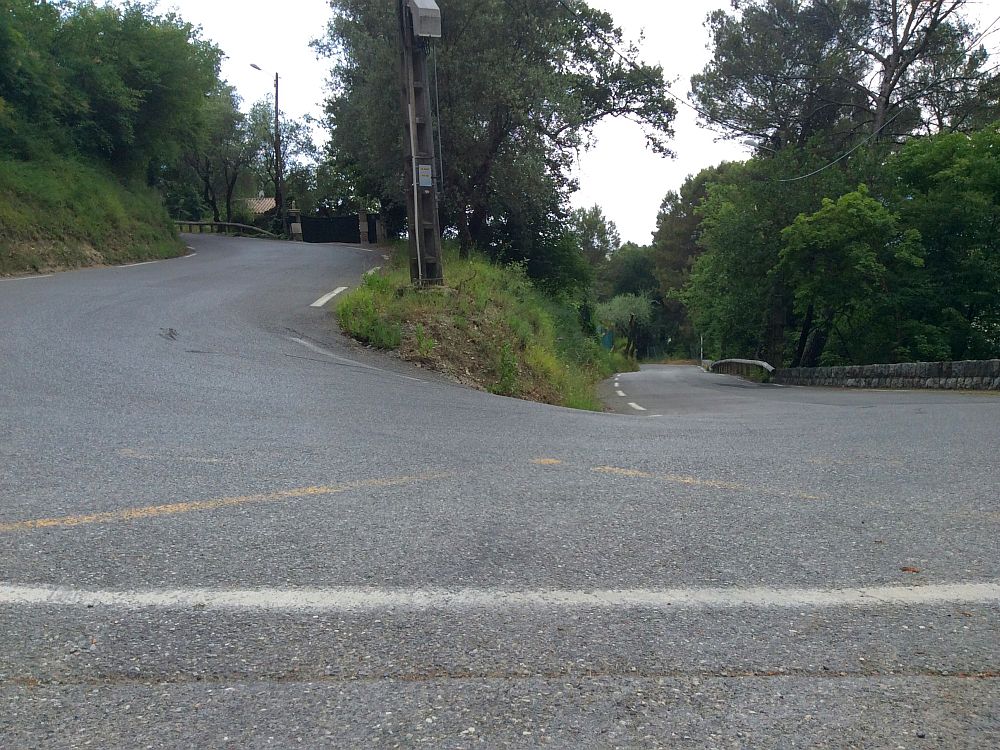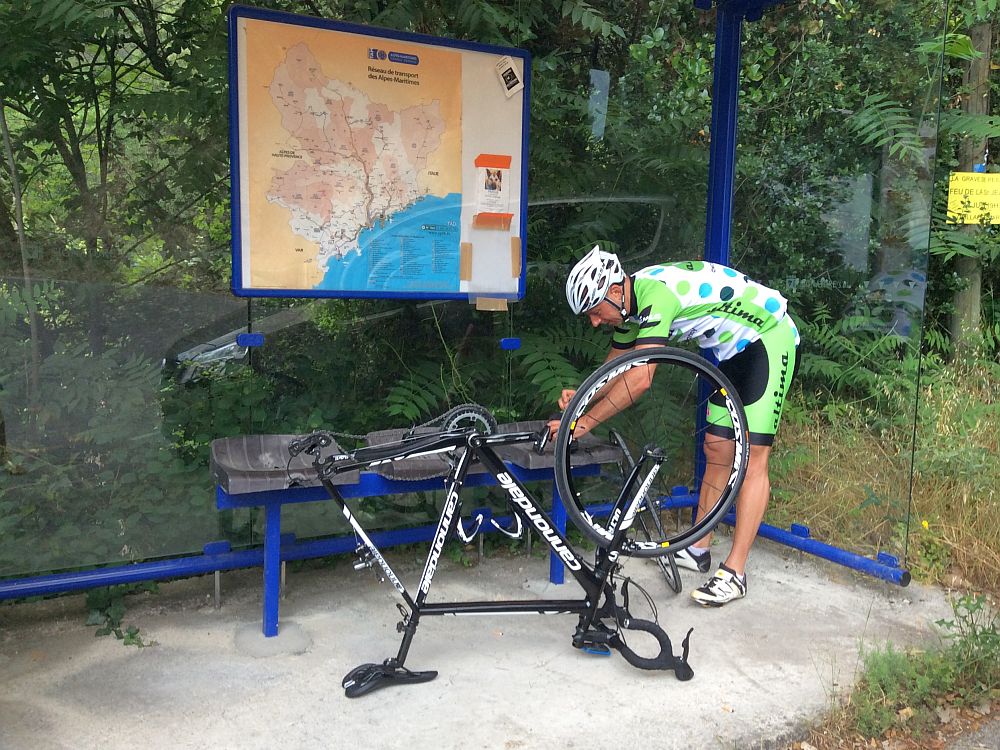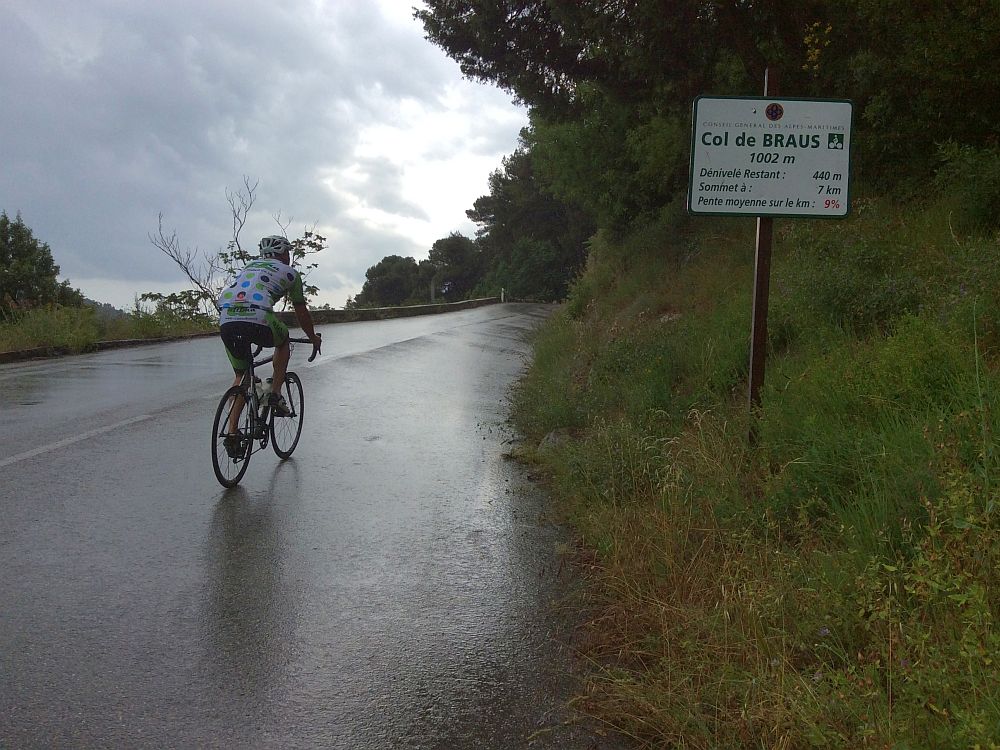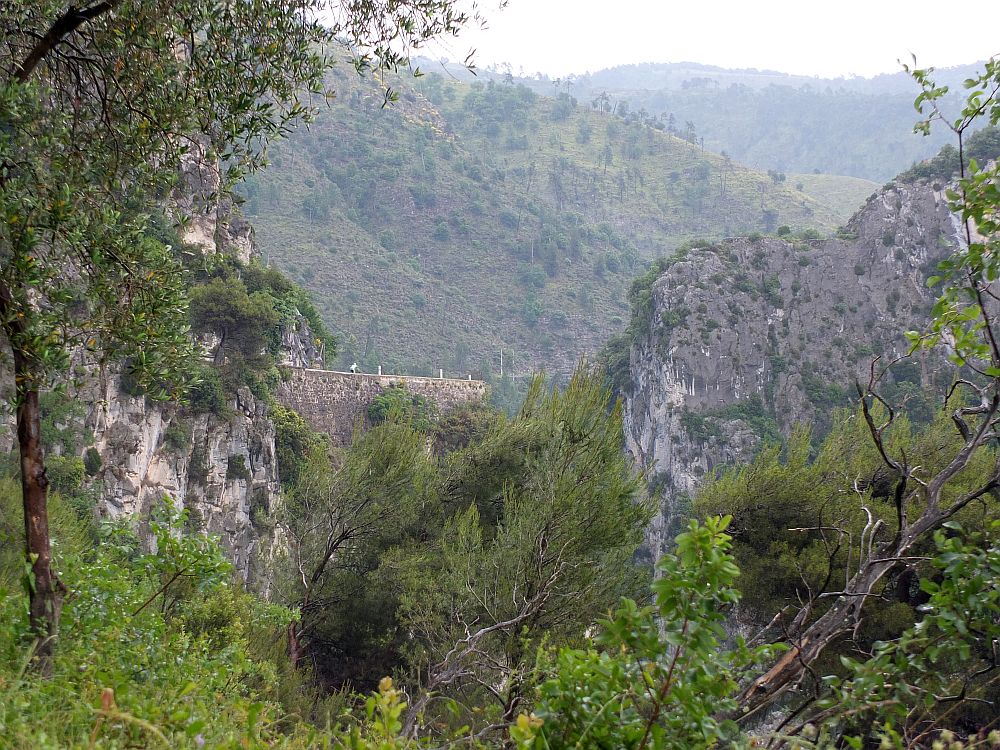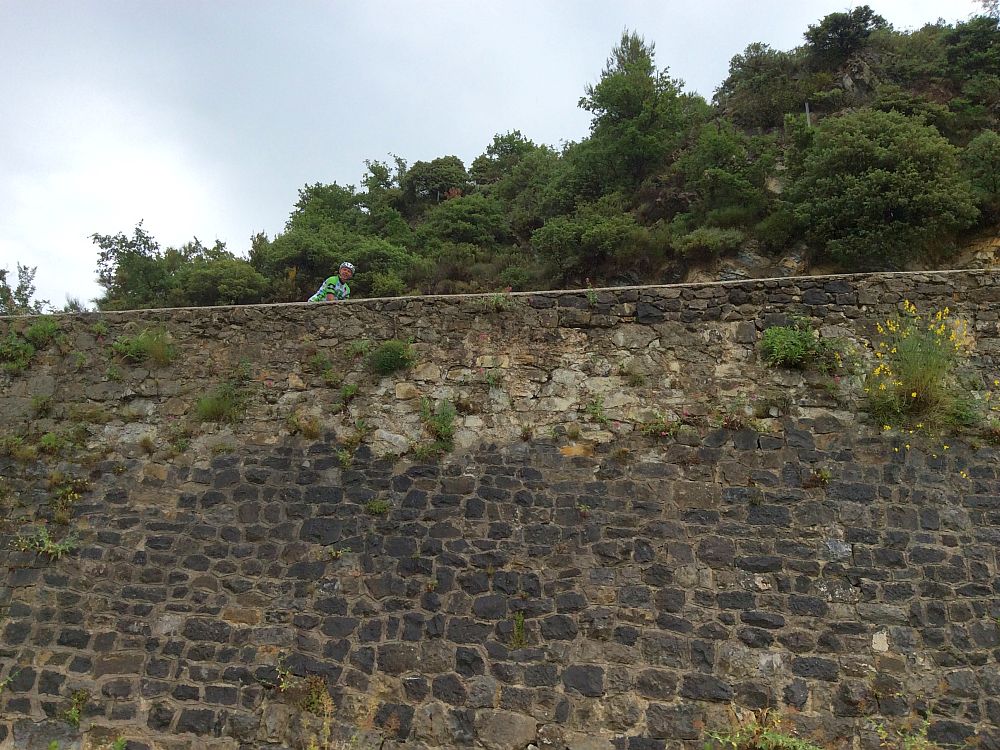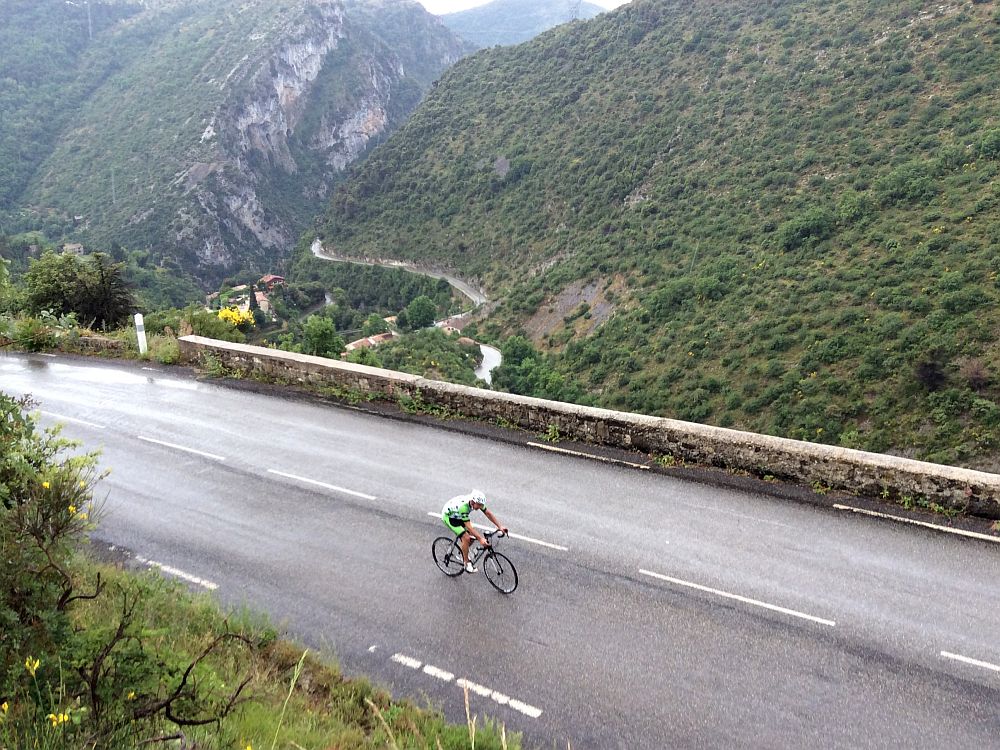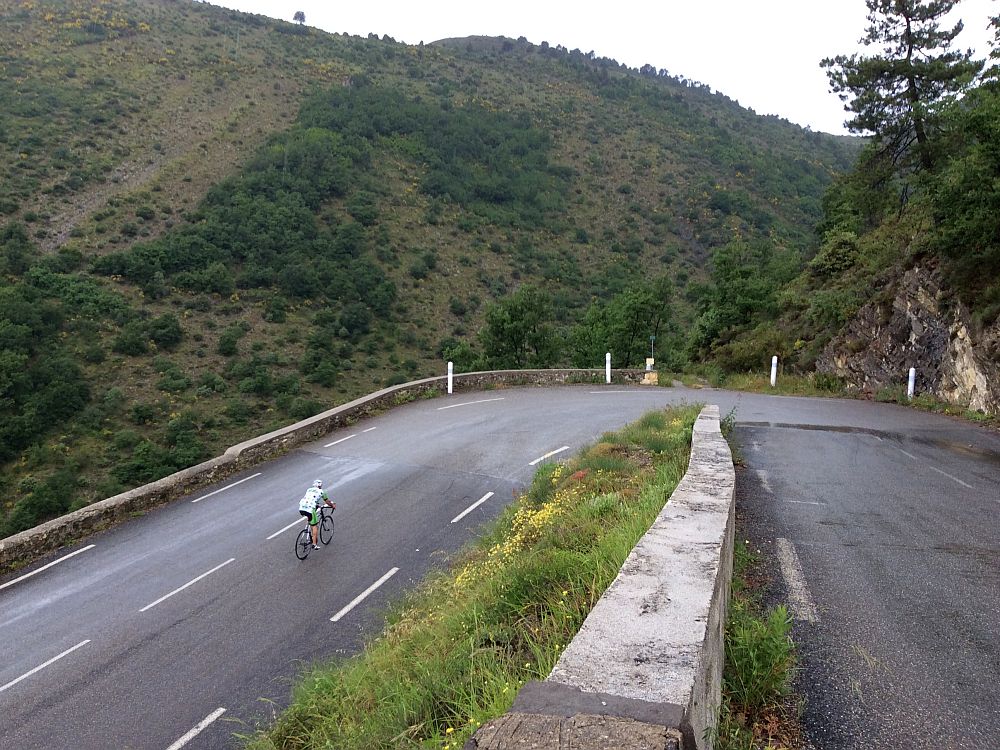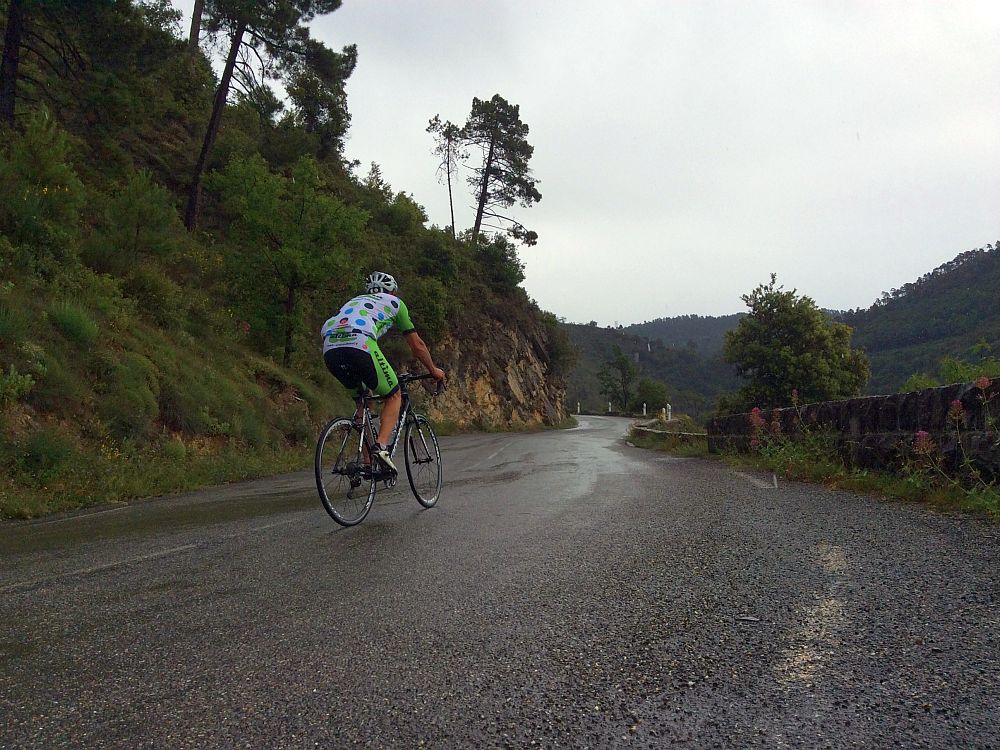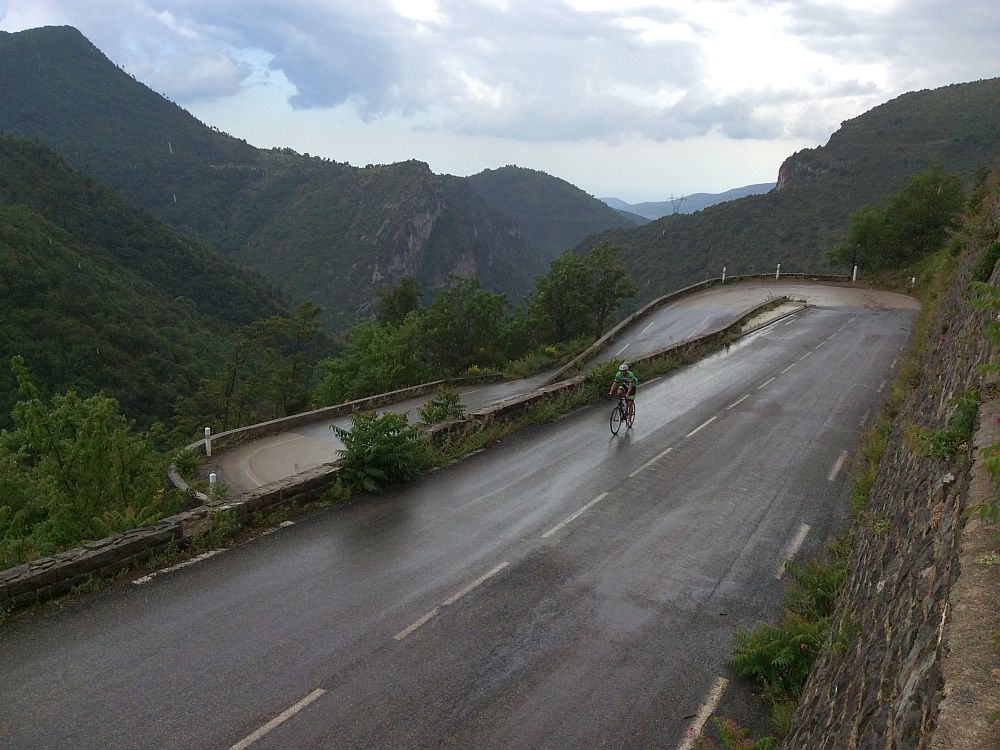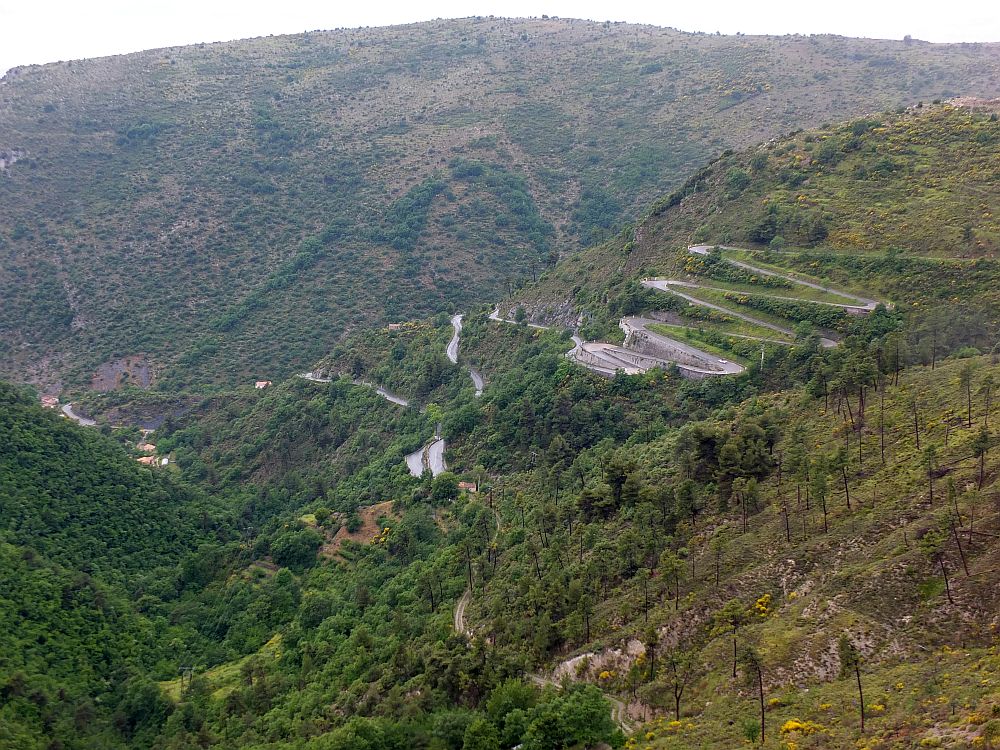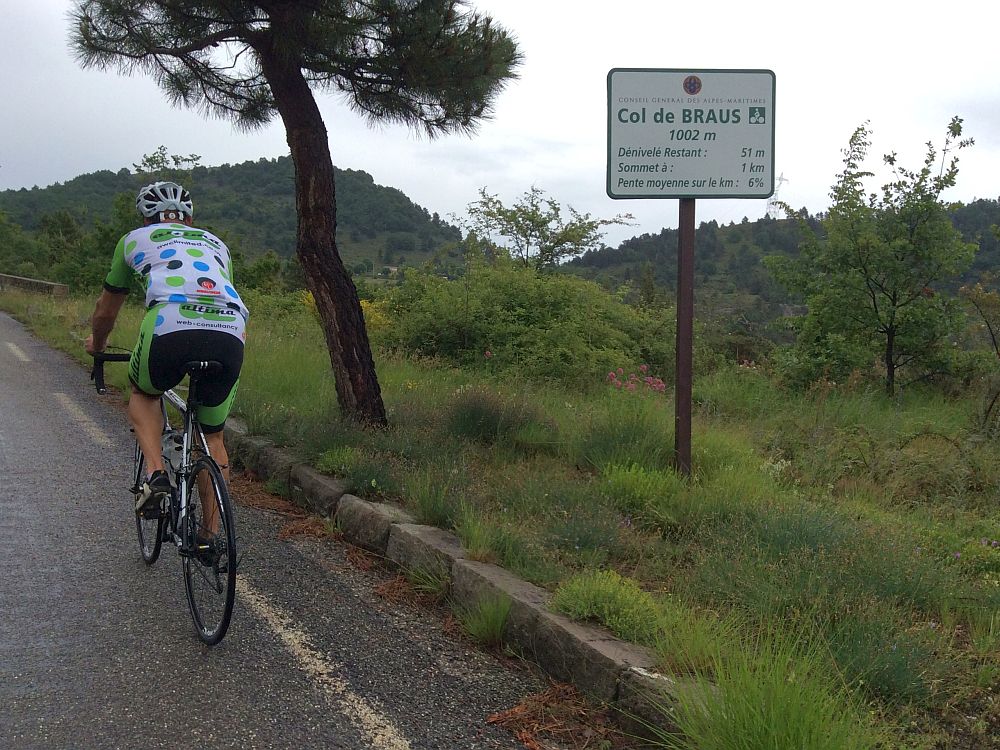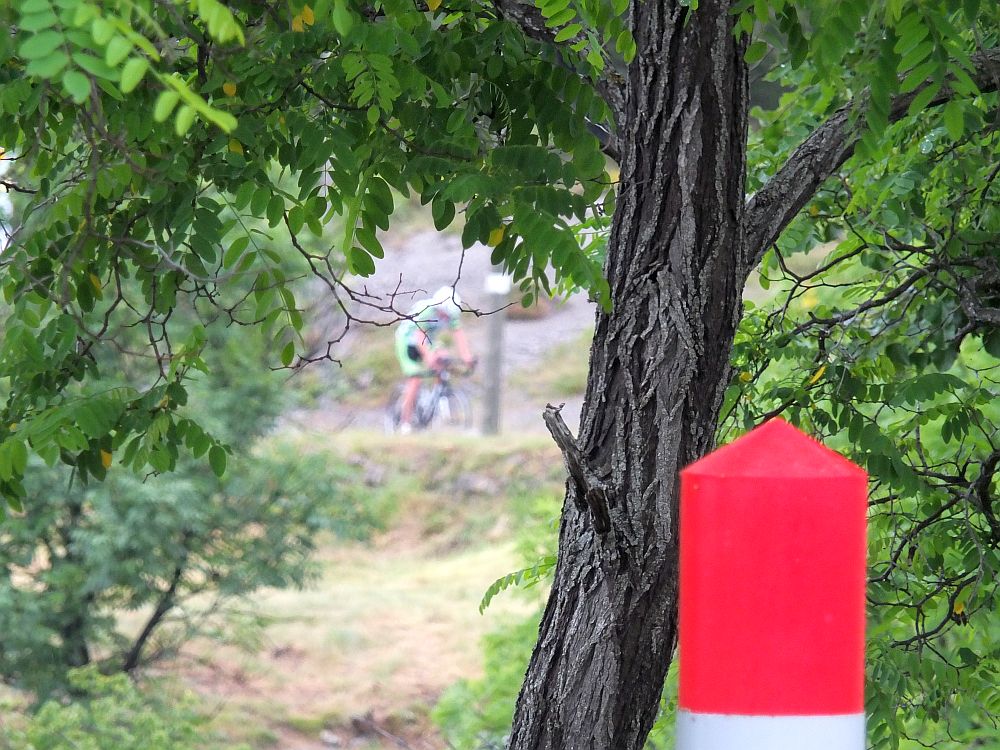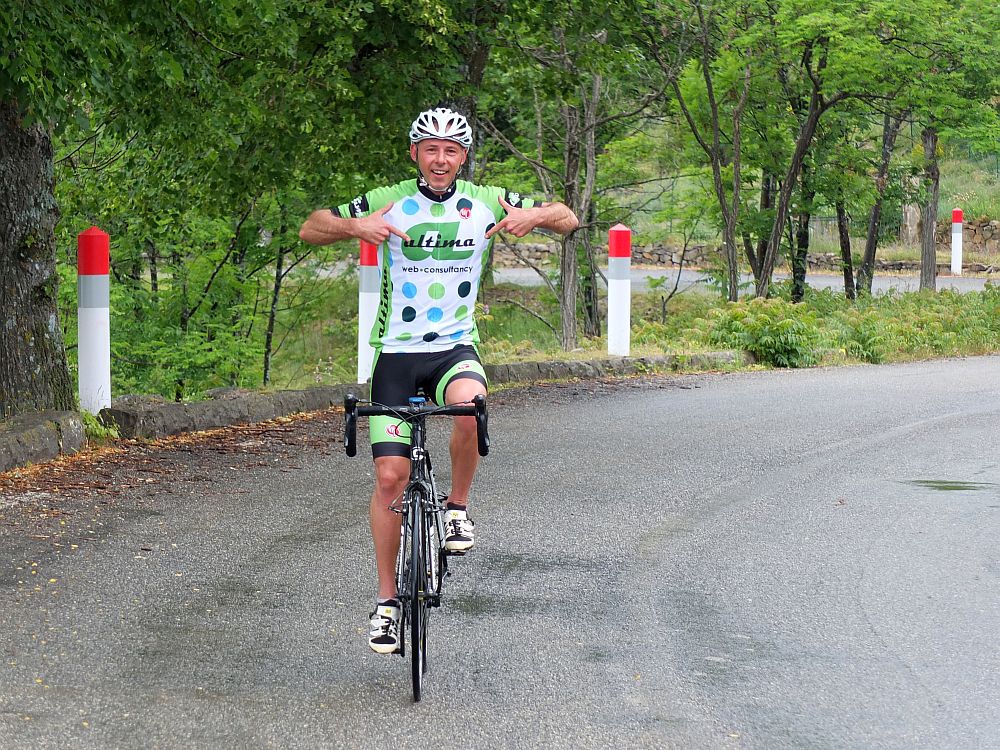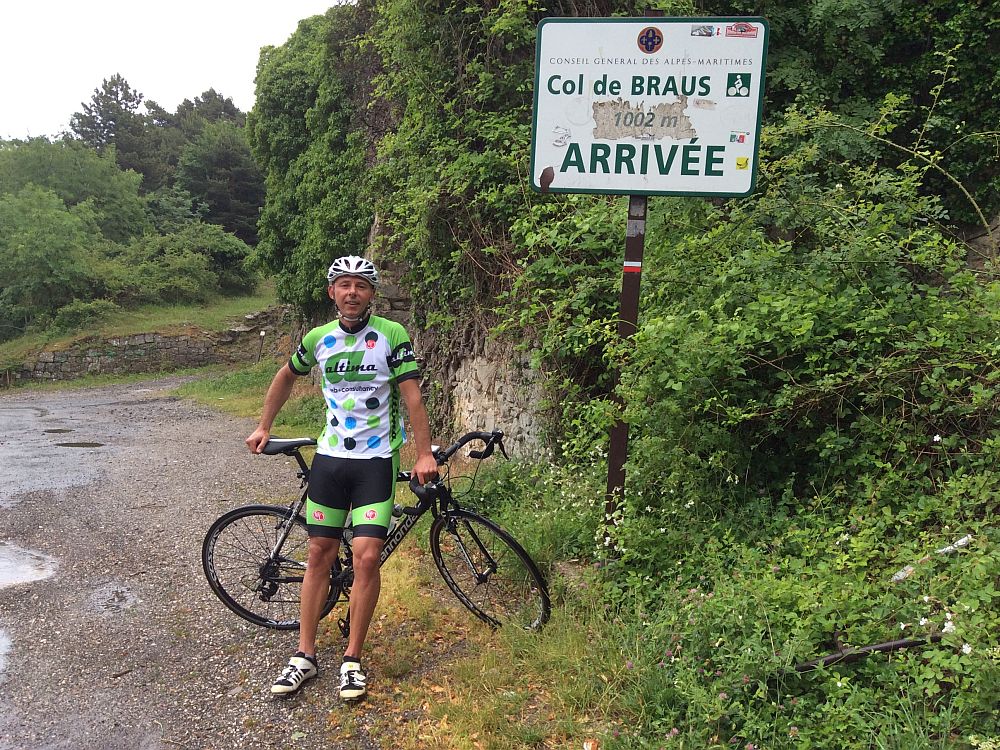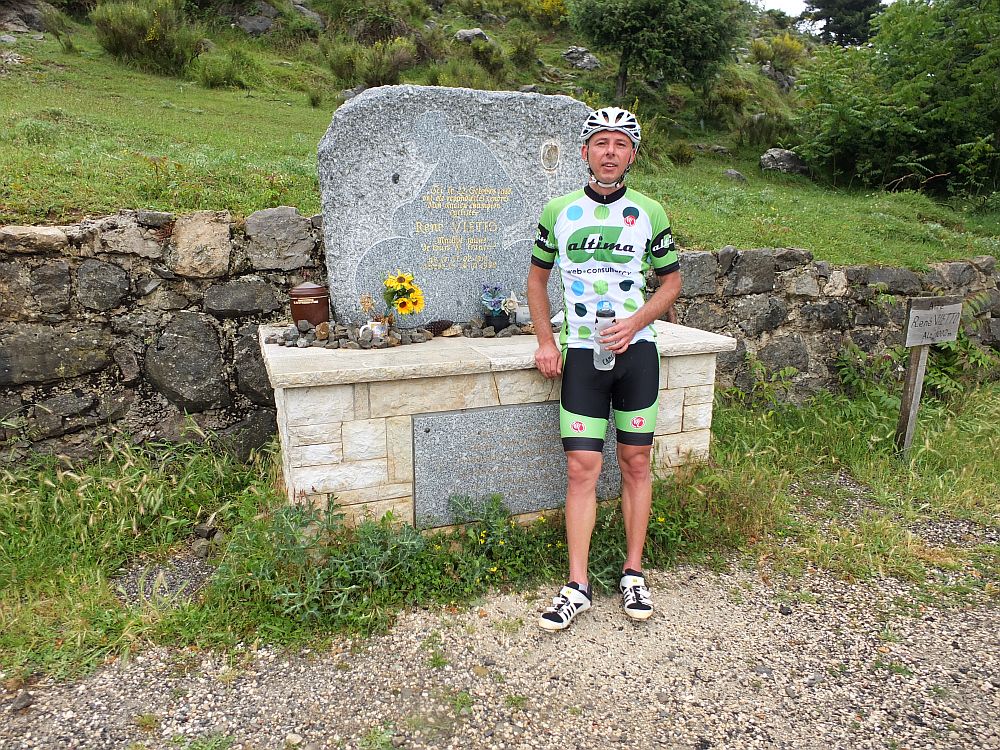Two classic Côte d’Azur climbs
The plan today was to ride from Menton – in the Côte d’Azur – to Sospel, a town close to the Italian border and not far from Monte Carlo. My reasoning was it would give me the opportunity to cycle Col de la Madone and Col de Braus – both classic south of France climbs. And if time allowed there was an alternative route back to Menton that I could ride to complete the loop. No problem if I didn’t though because Kay was going to be following me in the car.
Many of the road cyclists who live in the Nice-Monaco area have a crack at the Madone on a regular basis because it’s a good form finder. In fact I’ve read that Lance Armstrong used it regularly to test his fitness in the run up to the Tour de France. It seemed ideal preparation then for my Mont Ventoux 4 times in a day challenge at the end of the month.
The Col de la Madone climb
While the climb officially starts from the Promenade du Soleil in the centre of Menton I decided to start my ride about a kilometre inland from where the D22 joins the Route de Sainte-Agnès. Menton was manic this morning, far too busy, and I couldn’t be bothered to hunt around looking for somewhere to park the car just to unload my bike.
I must say I liked the Madone, from the opening kilometre I was struck by the spectacular views it offered of the Mediterranean. And after 5 km of climbing I arrived at Sainte-Agnès, a pretty hill-top town. There’s a narrow road to the town which provides stunning views of Roquebrune Cap Martin, Menton and on to Italy. And in the town there’s a fort – now a museum – that was built in 1932 as part of the Maginot Line.
At almost 15 km in length the Col de la Madone gains 920m in altitude. While the climb itself is fairly consistent with an average gradient of a little under 7%, there are a couple of flat spots which means that at times the gradient creeps into double figures. It is also worth mentioning that the climb is in the sun all the way up and in the summer months it can get very warm.
Oddly the Col de la Madone has never featured in the Tour France. Probably because the road isn’t wide enough. This is especially true after Sainte-Agnès and on the upper slopes where the road starts to narrow and where it begins to snake through a couple of tunnels.
And after all that effort, once you reach the top, there’s not a great deal to welcome you. It seems someone has stolen the Col sign so the finish is a little anti-climatic. And while the views inland towards Peille aren’t as spectacular as those out towards the Mediterranean they are nevertheless quite dramatic, especially with a thunderstorm moving in.
The Col de Braus climb
The ride down to Peille from the top of the Madone was quite eventful. I punctured twice on the descent and when I eventually reached the valley floor the heavens opened and I found myself in an almighty rainstorm. I was in two minds whether or not I should continue however after a short stop decided to cycle on to L’Escarene where the Col de Braus climb starts.
From L’Escarène the Col de Braus is a little over 10 km long, climbs 662m, and has an average gradient of 6.4%. The first couple of kilometres up to Touët-de-l’Escarène are relatively gentle but a short way out of the village the road kicks up to 10% and the climbing really starts.
With a little less than 5 km to go you arrive at some beautifully engineered hairpins. There are eight switchbacks all neatly stacked up on one another. It’s easy to see why the climb up from L’Escarene is considered the “classic” route. And for the next 2 km the road snakes up the mountain providing some epic photo opportunities.
Once the switchbacks end there’s still a couple of kilometres of climbing to do, with the road ramping up to 12% for about 200m, before it sweeps right to reveal a stunning view of the road you’ve just ridden up. It’s a not to missed photo opportunity and well worth stopping for a moment to take in the vista.
From L’Escarène the Col de Braus is a little over 10 km long, climbs 662m, and has an average gradient of 6.4%. The first couple of kilometres up to Touët-de-l’Escarène are relatively gentle but a short way out of the village the road kicks up to 10% and the climbing really starts.
From this point to the top the climb it is relatively straightforward with the road gradually flattening off until you reach the Col sign at the top. At the top of the climb there’s a memorial to French cyclist René Vietto. Vietto was one of the region’s best loved cyclists and one of the greatest French riders to never win the Tour de France.
René Vietto and the 1934 Tour de France
In 1934 René Vietto sacrificed his own chances in the Tour de France when, as virtual leader on the road and at the bottom of the Col de Braus descent, he heard that his team captain Antonin Magne had crashed. On hearing the news he turned around, climbed back up the Braus against the flow of riders coming down, and handed his bike over to Magne. Antonin Magne retained the race lead and Vietto still managed to finish 5th overall making him an instant star amongst the French cycling fraternity.
